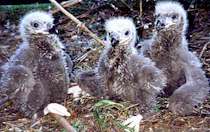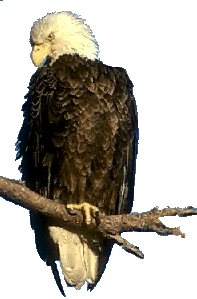|
|
|||
| Like an eagle that stirs up its nest and hovers over its young, that spreads its wings to catch them and carries them on its pinions. The LORD alone led him; no foreign god was with him Deuteronomy 32:11-12 | |||
NavigationThe Eagle's Nest
On Eagle's Wings Ministries
|

WELL.... EVEN EAGLES NEED A PUSH!The eagle gently coaxed her offspring towards the edge of the nest. Her heart quivered with conflicting emotions as she felt their resistance to her persistent nudging. "Why does the thrill of soaring have to begin with the fear of failing?" she thought. This ageless question was still unanswered for her. As in the tradition of the species, her nest was located high on the shelf of a sheer rock face. Below there was nothing but air to support the wings of each child. "Is it possible that this time it will not work?" she thought. Despite her fears, the eagle knew it was time. Her parental mission was all but complete. There remained one final task - the push. The eagle drew courage from an innate wisdom. Until her children discover their wings, there was no purpose for their lives. Until they learn how to soar, they will fail to understand the privilege it was to have been born an eagle. The push was the greatest gift she had to offer. It was her supreme act of love. And, so one by one she pushed them, and they flew! - David McNally
|
Newly hatched, eaglets are soft,
grayish-white down covers their small bodies, their wobbly legs are too weak
to hold their weight, and their eyes are partially closed, limiting vision.
Their only protection is their parents. |
Resources for young eagles in trainingComing soon Hey it takes a while to build a quality nest you know... I am working just about as fast as I can. And in due time the nest will be finished. Sorry for the construction mess but please be patient with me as I try to make a home for all my fine feathered friends on the net..
|
